Bài giảng Phương pháp giảng dạy Tiếng Anh - Chapter 4: How to describe learning & teaching
1. Concepts about language learning &
teaching
Adults: learning w/o studying if in the right
kind of contact
Children & adults similarly acquire
language successfully outside the
classroom:
First, being exposed to the language
Second, motivated to learn to communicate
Third, having opportunities to use the
language they have just learned
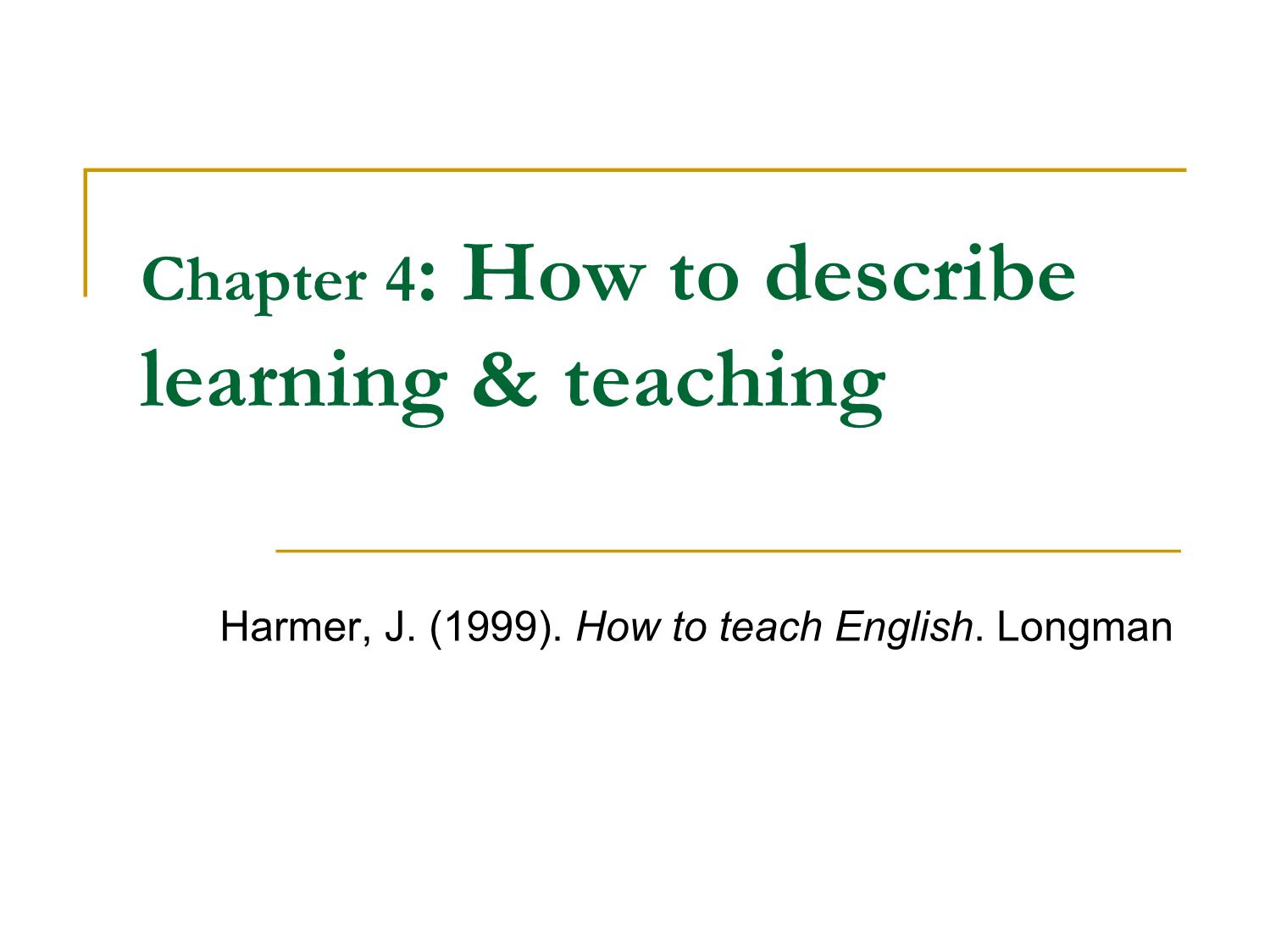
Trang 1
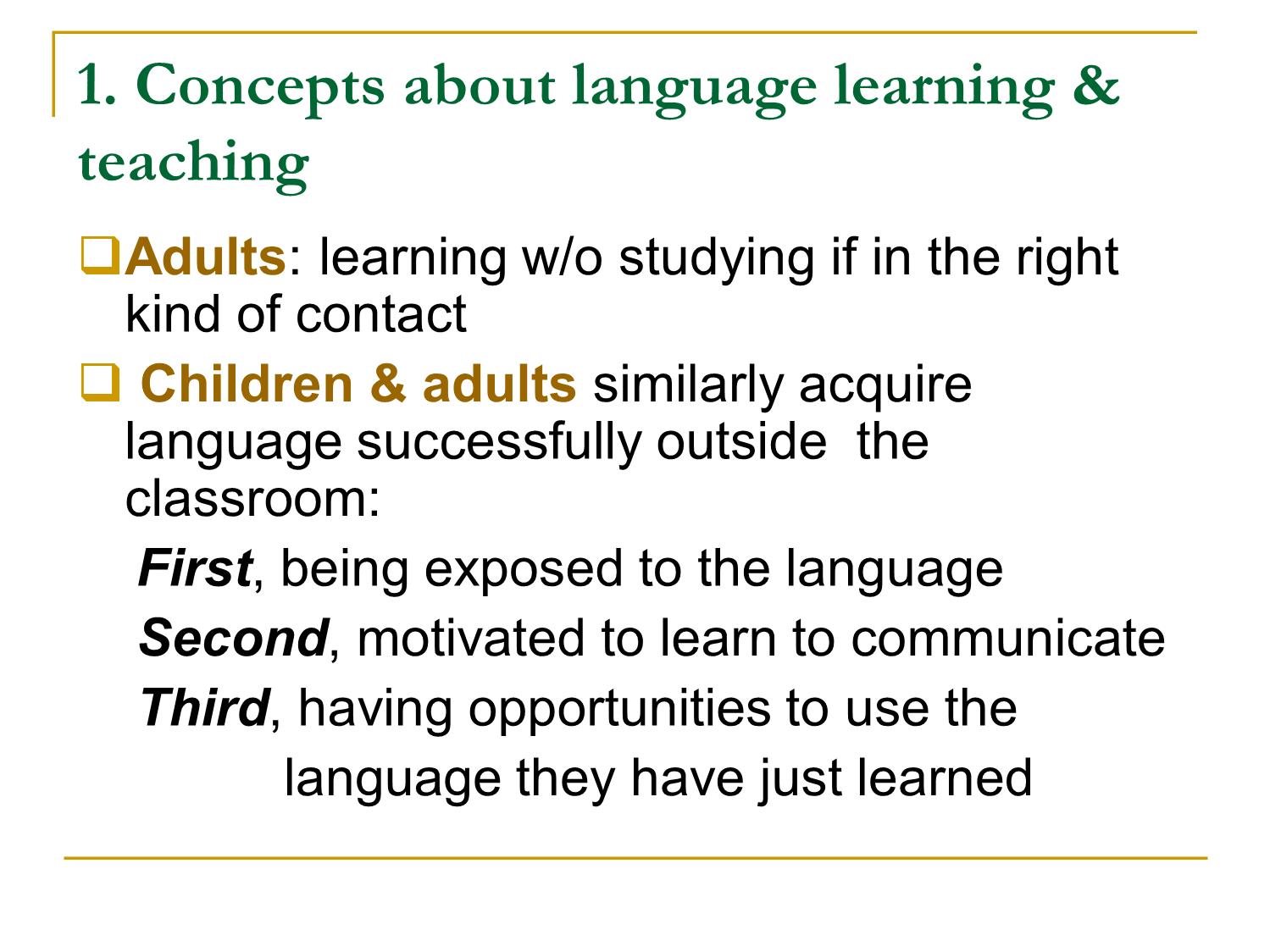
Trang 2
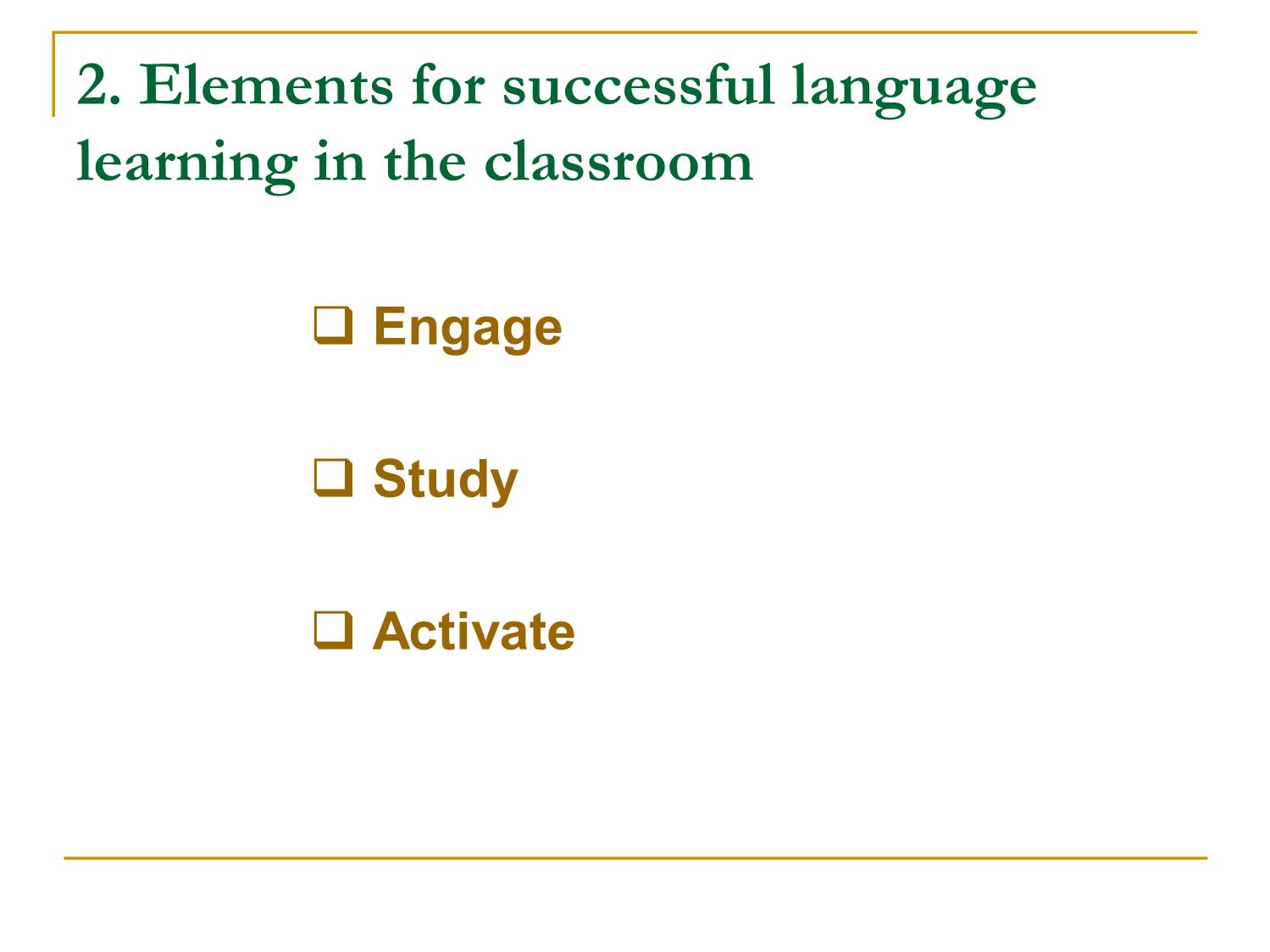
Trang 3
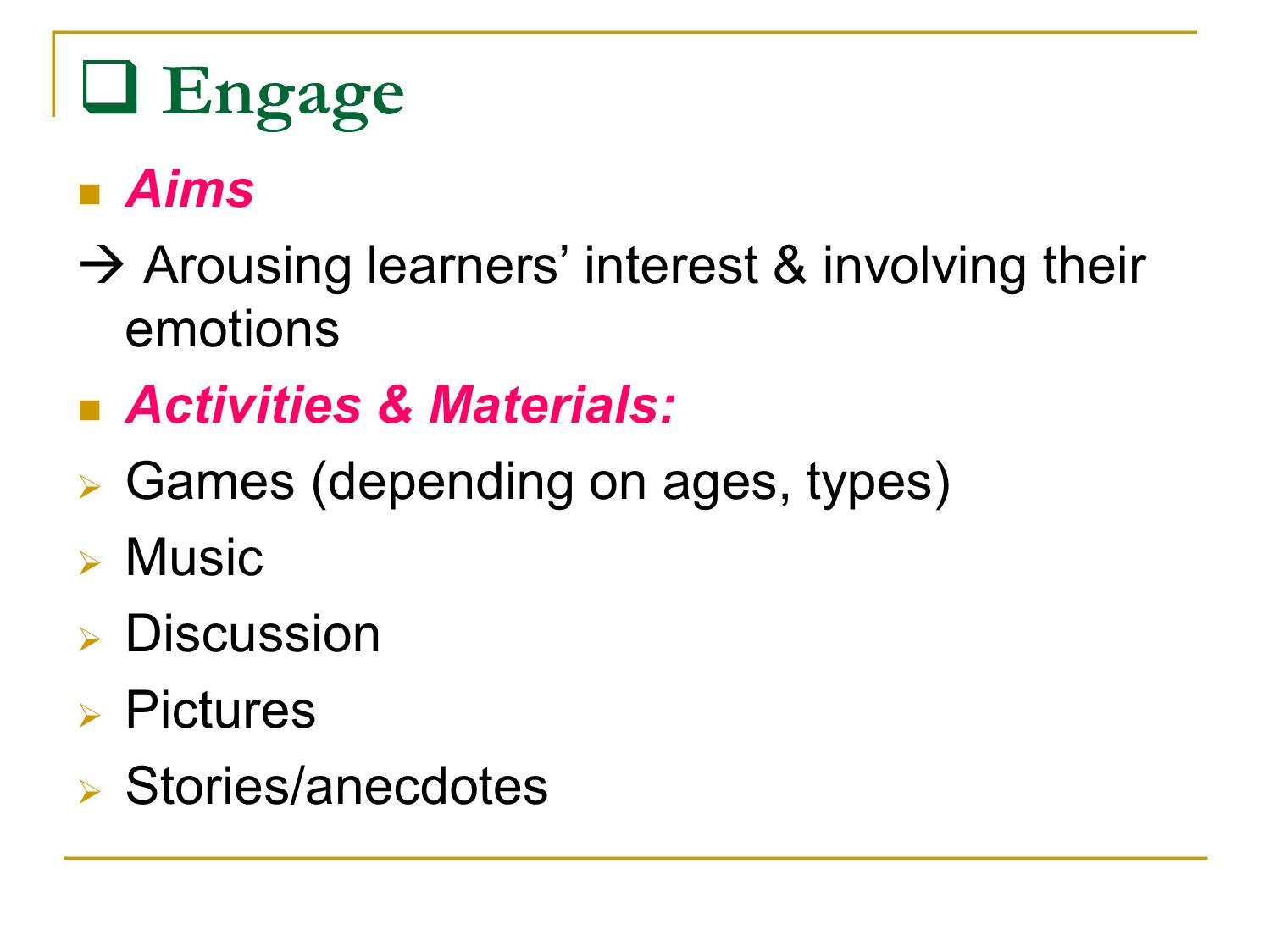
Trang 4
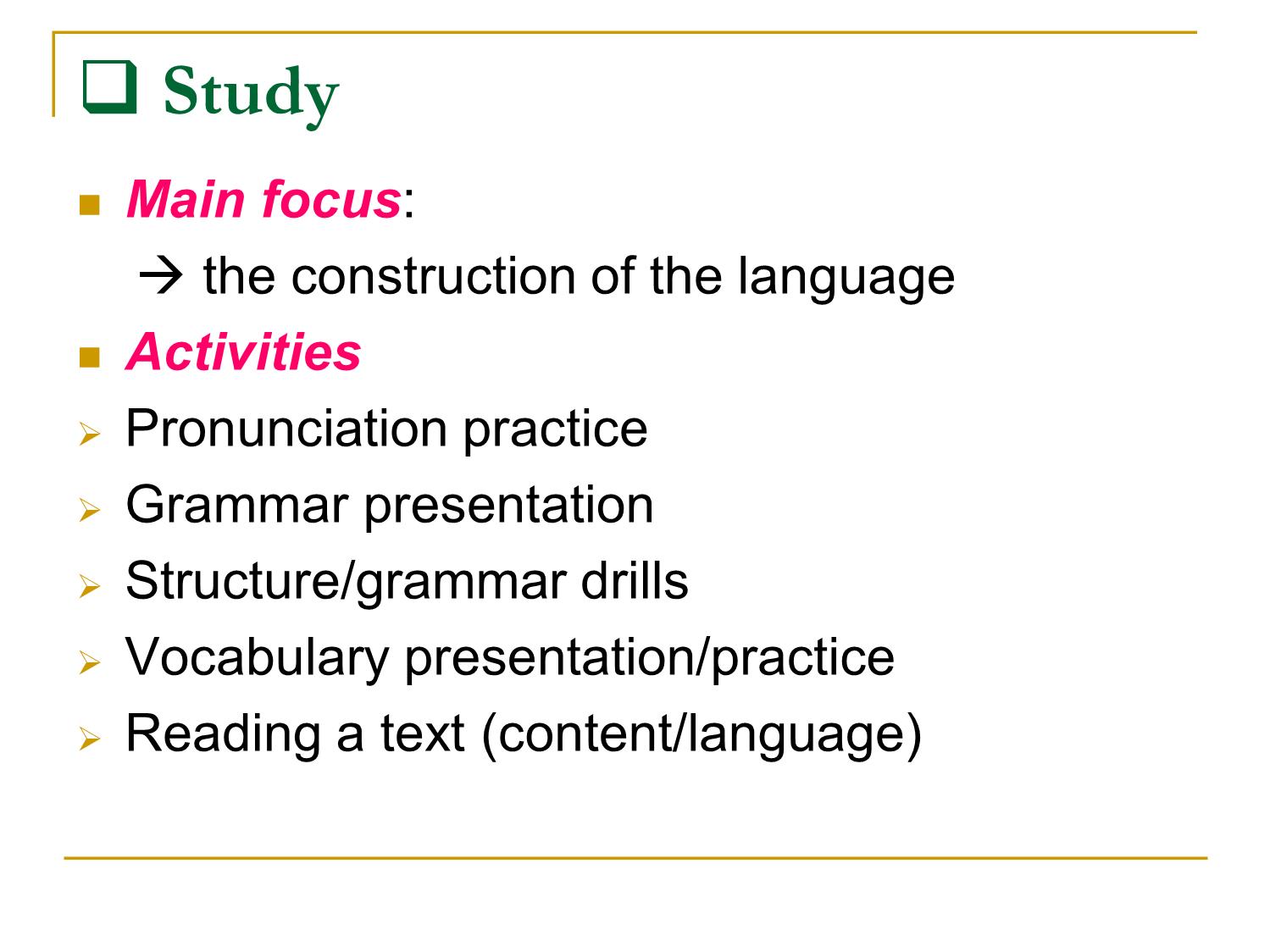
Trang 5
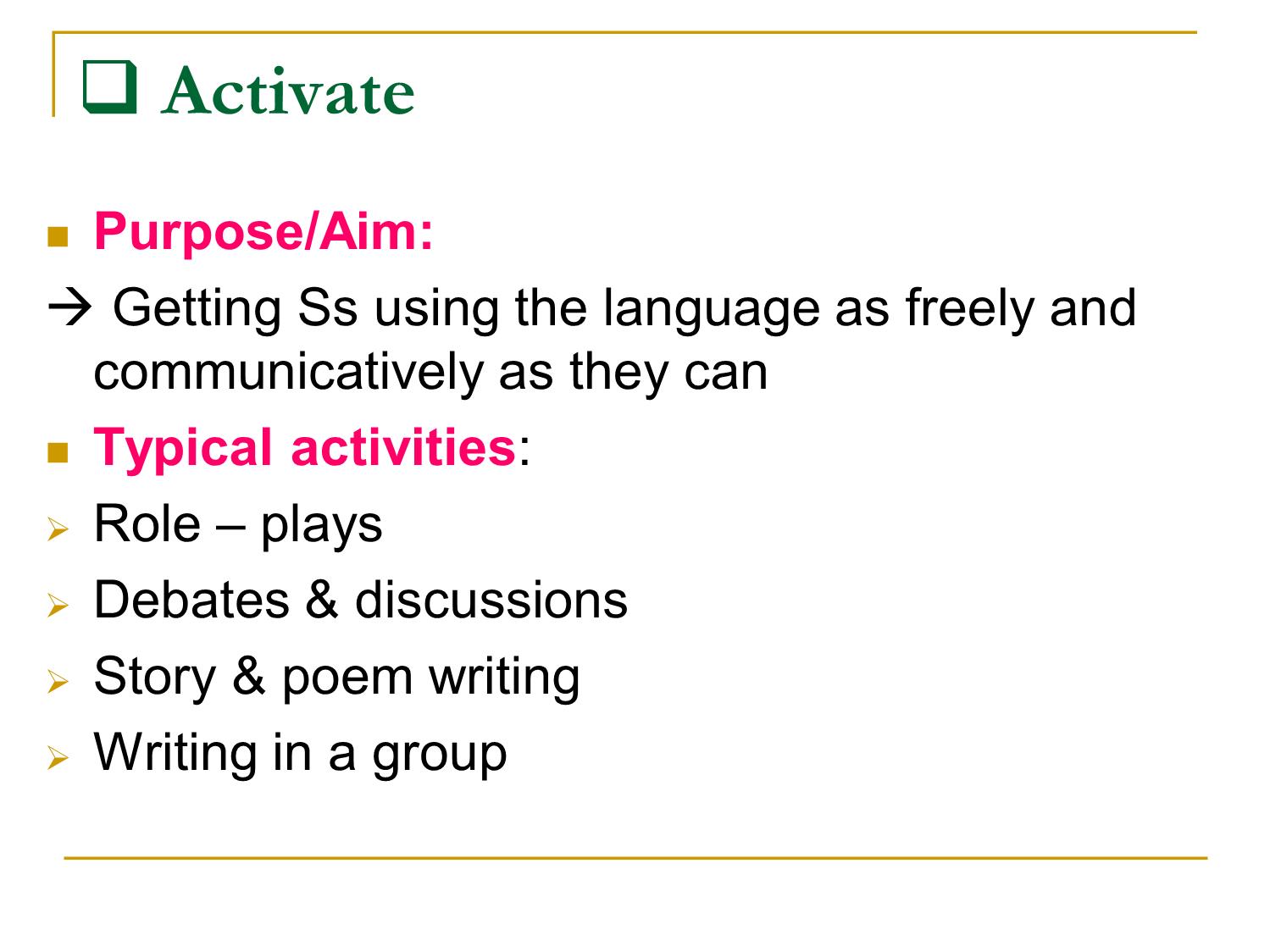
Trang 6
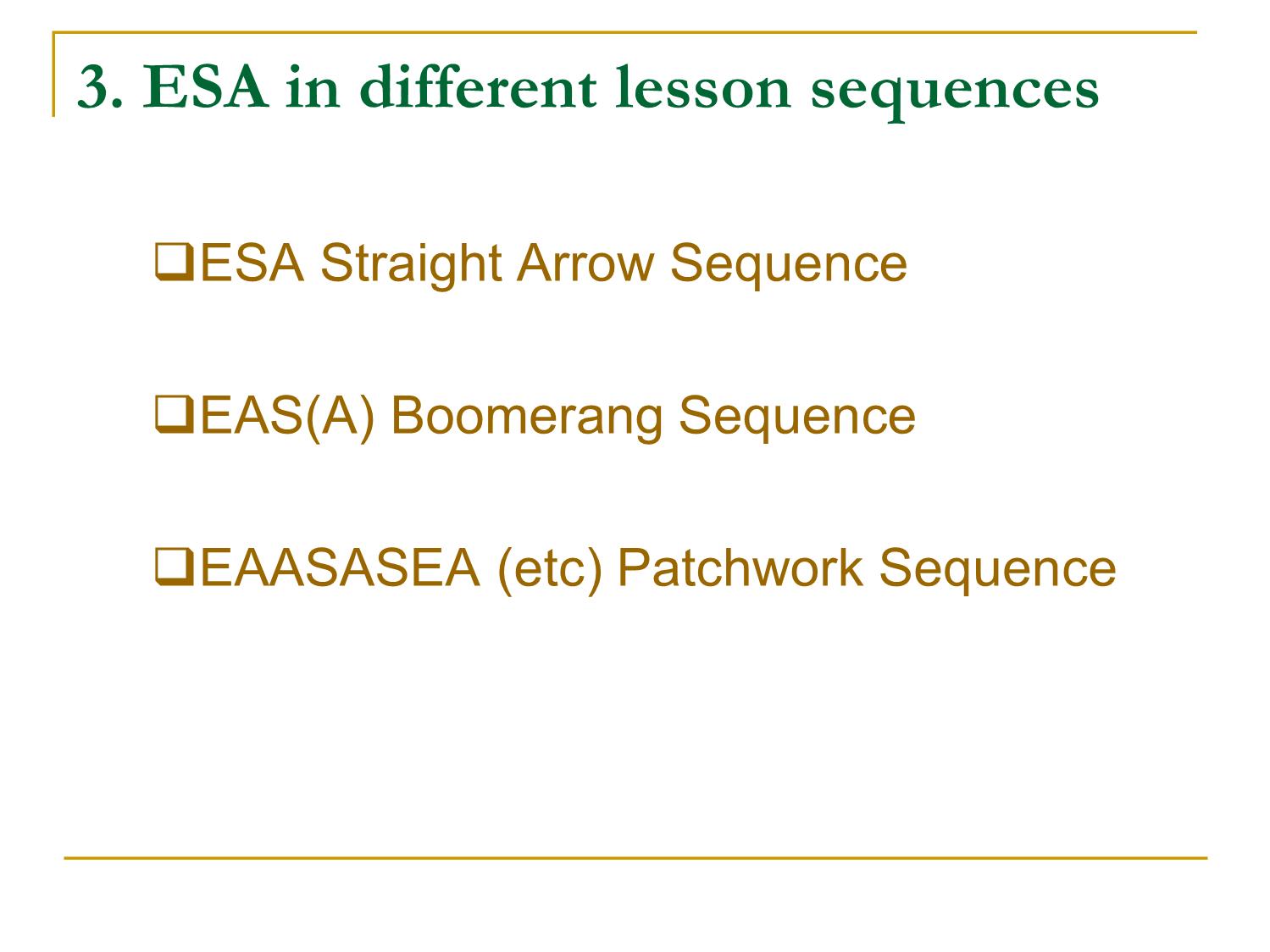
Trang 7
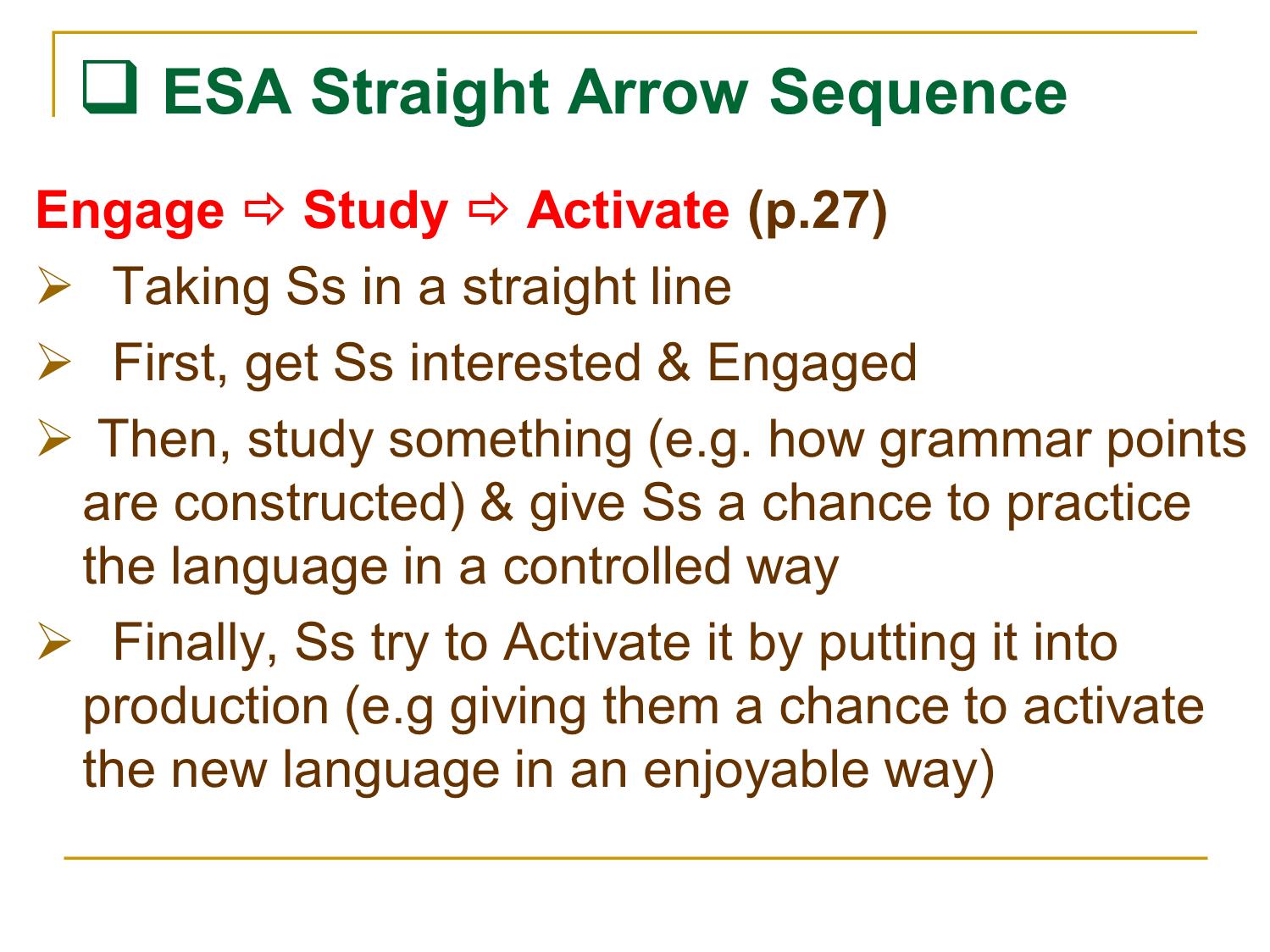
Trang 8
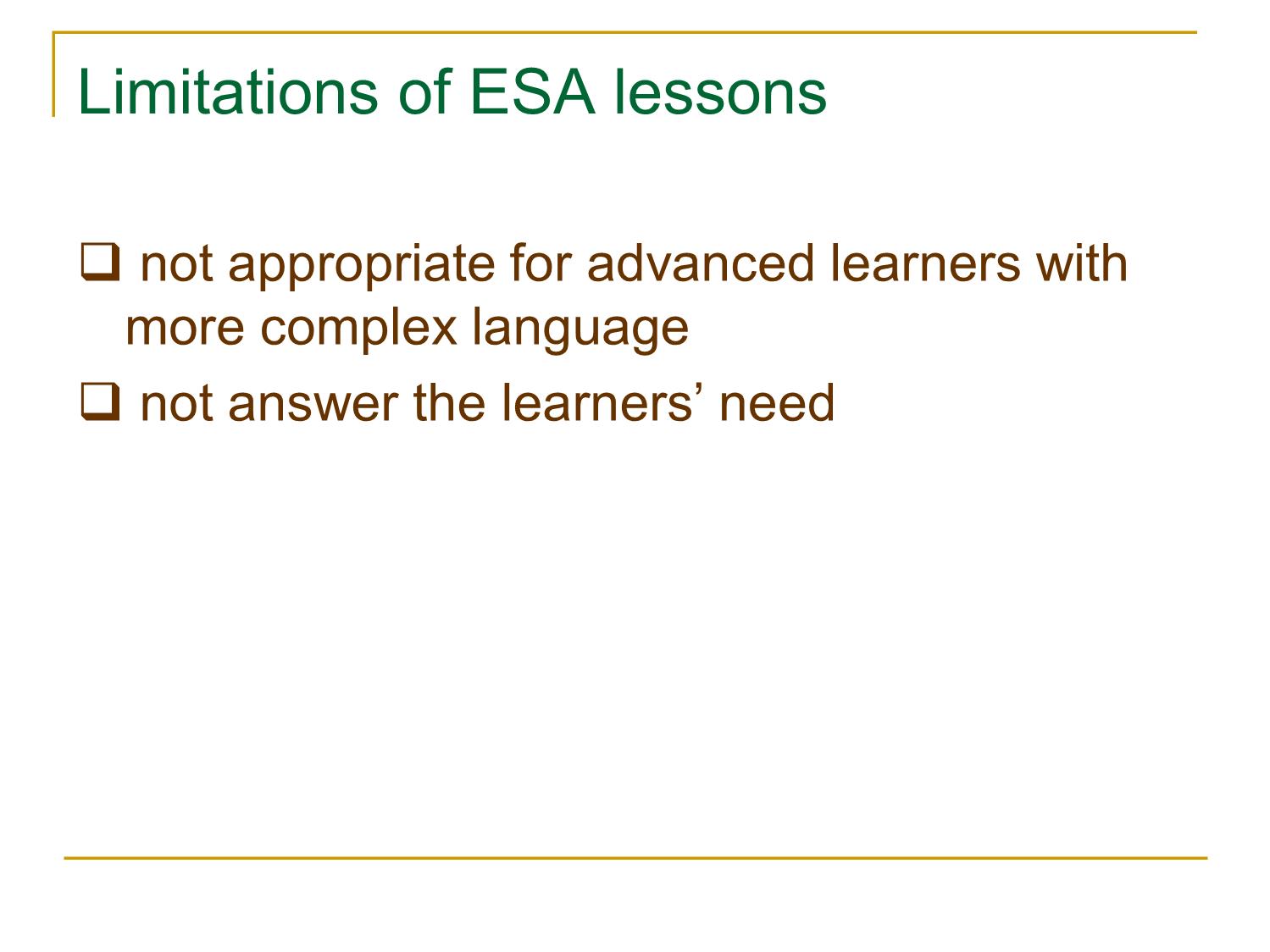
Trang 9
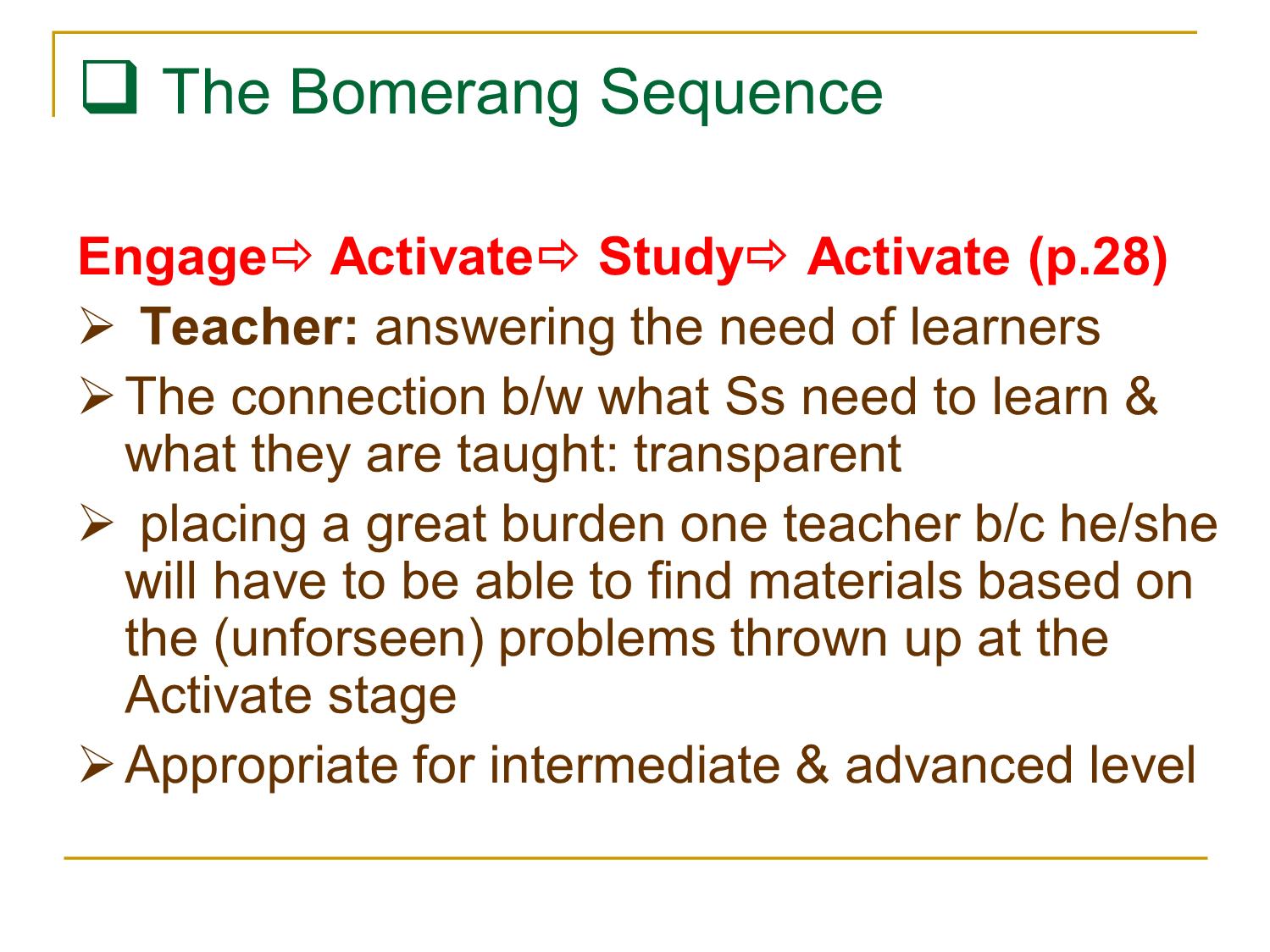
Trang 10
Tải về để xem bản đầy đủ
Bạn đang xem 10 trang mẫu của tài liệu "Bài giảng Phương pháp giảng dạy Tiếng Anh - Chapter 4: How to describe learning & teaching", để tải tài liệu gốc về máy hãy click vào nút Download ở trên
Tóm tắt nội dung tài liệu: Bài giảng Phương pháp giảng dạy Tiếng Anh - Chapter 4: How to describe learning & teaching
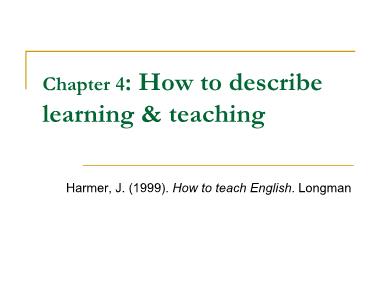
Chapter 4: How to describe learning & teaching Harmer, J. (1999). How to teach English. Longman 1. Concepts about language learning & teaching Adults: learning w/o studying if in the right kind of contact Children & adults similarly acquire language successfully outside the classroom: First, being exposed to the language Second, motivated to learn to communicate Third, having opportunities to use the language they have just learned 2. Elements for successful language learning in the classroom Engage Study Activate Engage Aims Arousing learners’ interest & involving their emotions Activities & Materials: Games (depending on ages, types) Music Discussion Pictures Stories/anecdotes Study Main focus: the construction of the language Activities Pronunciation practice Grammar presentation Structure/grammar drills Vocabulary presentation/practice Reading a text (content/language) Activate Purpose/Aim: Getting Ss using the language as freely and communicatively as they can Typical activities: Role – plays Debates & discussions Story & poem writing Writing in a group 3. ESA in different lesson sequences ESA Straight Arrow Sequence EAS(A) Boomerang Sequence EAASASEA (etc) Patchwork Sequence ESA Straight Arrow Sequence Engage Study Activate (p.27) Taking Ss in a straight line First, get Ss interested & Engaged Then, study something (e.g. how grammar points are constructed) & give Ss a chance to practice the language in a controlled way Finally, Ss try to Activate it by putting it into production (e.g giving them a chance to activate the new language in an enjoyable way) Limitations of ESA lessons not appropriate for advanced learners with more complex language not answer the learners’ need The Bomerang Sequence Engage Activate Study Activate (p.28) Teacher: answering the need of learners The connection b/w what Ss need to learn & what they are taught: transparent placing a great burden one teacher b/c he/she will have to be able to find materials based on the (unforseen) problems thrown up at the Activate stage Appropriate for intermediate & advanced level The Patchwork Engage Activate Activate Study Activate Study Activate Study Engage Activate (page 29) 4. What teaching models have influenced current teaching practice? Grammar Translation Audio-lingualism Presentation-Practice-Production Task-Based Learning Communicative Language Teaching
File đính kèm:
 bai_giang_phuong_phap_giang_day_tieng_anh_chapter_4_how_to_d.pdf
bai_giang_phuong_phap_giang_day_tieng_anh_chapter_4_how_to_d.pdf

